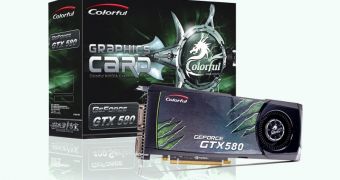That video card sales would slide down a bit now that Intel and AMD are both selling chips with integrated graphics was a given, but the rate at which this is happening may seem staggering to some.
For about 8 months now, Advanced Micro Devices has been selling Fusion APUs (accelerated processing units), which have built-in low-end or even mid-range graphics, with DirectX 11 support.
Intel's own CPUs do not have DirectX 11 and are overall less impressive in terms of graphics but, nonetheless, they do have on-chip video abilities.
This has caused the rate of sales for add-in graphics adapters to drop, and though this was expected, the percentage of decline may take some by surprise.
According to market analyst firm Jon Peddie Research (JPR), the second quarter of 2011 saw overall add-in-board shipments falling by 15.2% sequentially. This means that, from the Q1 19.01 million, the number fell to 16.1 million.
On that note, this year should see the AIB market reach $13.8 billion, a 33% decline compared to 2010. Both lower consumer demand and a decrease in pricing are contributing factors.
The market shares, on the other hand, did not change overmuch, as NVIDIA lost 0.1% and AMD gained just as much, a negligible amount all things considered.
Still, even though the AIB market share distribution is not bound to change any time soon, NVIDIA still has to face the fact that, unlike AMD and Intel, it does not have x86 CPUs with integrated chips.
As such, it is very possible that it will very strongly feel the sting of no longer having much of a place on the low end and mainstream graphics segment.
Then again, with how ARM has been gaining ground, it might remedy this issue if such units finally become mighty enough to be seriously considered as PC solutions. The success of the Tegra, at least, paints a favorable picture.

 14 DAY TRIAL //
14 DAY TRIAL //